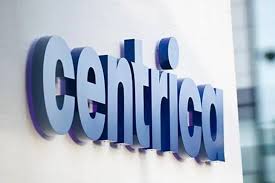Glencore PLC (GLEN.L), a titan in the basic materials sector, is a significant player in the industrial metals and mining industry. With its headquarters nestled in Baar, Switzerland, Glencore’s expansive operations span across continents, producing and marketing a diverse range of commodities, including metals, minerals, and energy products. As investors evaluate the financial landscape of Glencore, several key metrics and market dynamics demand attention.
At the current trading price of 288.1 GBp, Glencore’s stock has seen a modest decline of 0.02%, a movement that may raise eyebrows considering the broader 52-week range between 230.05 GBp and 483.05 GBp. This volatility reflects broader market challenges and the inherent risks in the commodities sector. Despite this, Glencore holds a substantial market capitalisation of $34.93 billion, underscoring its formidable presence in the industry.
A closer examination of Glencore’s valuation metrics reveals some ambiguities. Notably, the absence of a trailing P/E ratio, alongside a surprisingly high forward P/E of 860.10, suggests potential discrepancies between current earnings and future growth expectations. This disparity may indicate investor optimism about Glencore’s long-term potential, but it also highlights the inherent risks of investing in an industry subject to fluctuating commodity prices and economic cycles.
From a performance standpoint, Glencore’s revenue growth of 3.10% provides a glimmer of stability. However, the company faces challenges with a negative EPS of -0.10 and a return on equity standing at -7.29%. These figures may be cause for concern, as they indicate profitability pressures and efficiency issues. On a more positive note, Glencore’s free cash flow is robust at $5.66 billion, suggesting a capacity to weather financial storms and reinvest in future growth opportunities.
Dividend-seeking investors may find Glencore’s 2.75% yield appealing, although the payout ratio of 131.12% raises questions about sustainability. Such a high payout ratio implies that Glencore is distributing more than its net earnings to shareholders, which may not be tenable in the long term unless earnings improve.
The market sentiment towards Glencore appears optimistic, with 15 buy ratings and only one hold recommendation. Analysts have set a target price range between 295.13 GBp and 461.57 GBp, with an average target of 380.74 GBp. This suggests a potential upside of 32.15%, which could entice risk-tolerant investors looking for growth opportunities within the sector.
Technical indicators also offer insights into Glencore’s stock performance. The 50-day moving average of 266.75 GBp and the 200-day moving average of 346.20 GBp suggest a potential for price recovery. However, the Relative Strength Index (RSI) at 31.15 indicates that the stock is nearing oversold territory, which could signal a buying opportunity for investors who believe in the company’s long-term prospects.
Glencore’s role as a global commodity powerhouse means it is intricately linked with the health of worldwide economic activity, particularly in emerging markets. The company’s extensive involvement in the production and distribution of metals essential for electronics, construction, and battery production aligns it well with future growth sectors, such as renewable energy and electric vehicles.
Investors considering Glencore should weigh the potential for capital appreciation against the risks posed by fluctuating commodity prices, geopolitical tensions, and operational challenges. While the company’s extensive global footprint and diversified portfolio offer resilience, sustaining profitability and managing payout ratios will be crucial for maintaining investor confidence. As the world navigates an era of economic uncertainty and environmental transition, Glencore’s strategic decisions will undoubtedly shape its path forward in the dynamic metals and mining sector.





































